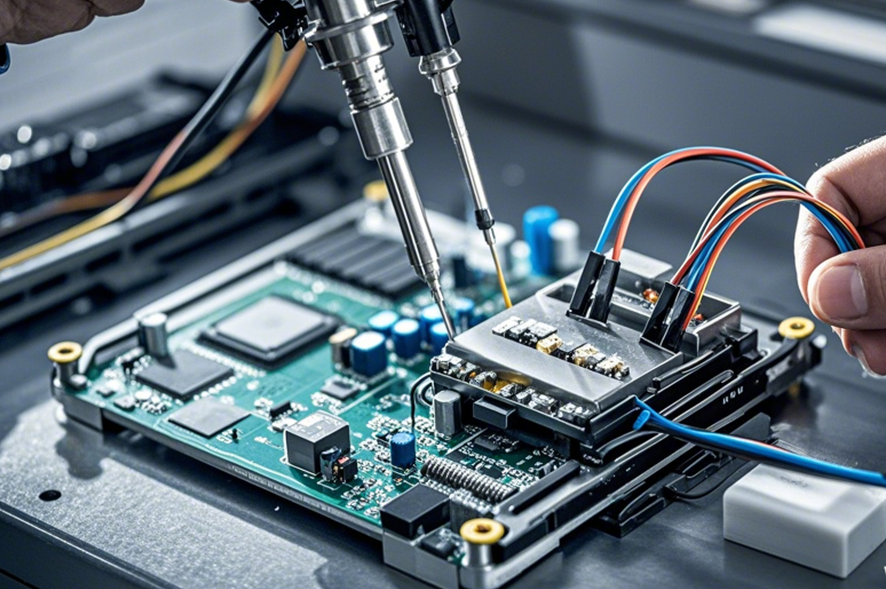
The materials used to make soft hard PCBs mainly include rigid materials, flexible materials, bonding materials, conductive materials, etc. The following are the characteristics of these materials:
Rigid material: Traditional FR-4 material 2 is usually used. Having high insulation properties, it can effectively prevent circuit short circuits and ensure electrical isolation between electronic
components; Has good mechanical strength, provides stable support for circuit boards, can withstand the weight of electronic components, and is safe to useExternal forces during
installationand use; Has good high temperature resistance and can withstand high temperature processes such as welding, ensuring stable performance within the normal operating
temperature range of electronic products.
Flexible materials: Polyimide (PI) film is generally used, and some polyester film (PET) 3 is also used. PI material has excellent flexibility, which can ensure the integrity of the circuit and the
continuity of the signal under repeated folding or bending; Has excellent high temperature resistance and chemical propertiesLearning stability, able to maintain performance unchanged
in extreme environments. PET film has a relatively
lower price and better flexibility, but is slightly inferior to PI film in terms of high temperature resistance and chemical stability.
Adhesive material:
Acrylic adhesive:It is a thermosetting material widely used in high-temperature flexible applications. It has excellent resistance to chemical reactions, can resist the influence of
chemicals and solvents during processing, has excellent adhesion, and also has good flexibility.
Epoxy adhesive:It is also a thermosetting material with a thermal expansion coefficient several times lower than that of acrylic adhesives. Its thermal expansion in the Z direction is
small, which is conducive to ensuring the thermal shock resistance of the metalized pores. Improved epoxy resin adhesive has a low coefficient of temperature expansion and high
adhesive strength, Low moisture absorption rate and resistance to chemical solvents during processing.
Conductive material:
Electrolytic copper foil:Formed by electroplating, the copper particles have a vertical needle like crystalline state, which is conducive to the production of fine circuits and easy to
form vertical line edges during etching. However, when the bending radius is less than 5mm or when subjected to dynamic bending, needle like structures are prone to fracture.
Rolled copper foil:Its copper particles have a horizontal axis structure, which can adapt to multiple bending, and the surface of rolled copper is smoother than electrolytic copper. Due
to the skin effect, wires made of rolled copper have lower losses at high frequencies.
In addition, there are also pre impregnated materials (PP), such as Normal PP, which are commonly used in the manufacturing of multi-layer PCBs to bond copper foils between layers and ensure the insulation performance of PCB boards; No Flow PP is used in the manufacturing of high-density interconnect PCBs and does not flow at high temperatures. It can better control the position and thickness of copper foil, ensuring the dimensional and shape accuracy of PCBs.






